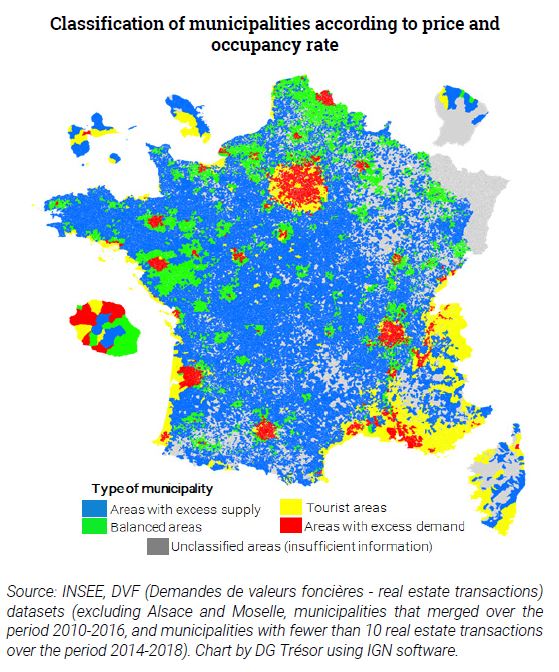Private housing construction and renovation in France
Since 2010, territorial disparities in the housing market have increased (drop in the rate of occupied housing, price divergence). This dynamic runs counter to the objectives of housing policy and the reduction of CO2 emissions and land artificialisation. In the future, public policies should make it possible to stimulate construction in areas with excess demand, in a dense and low-carbon manner, and encourage the renovation/rehabilitation of existing housing.
In 2018, France had 29 million households and roughly 36 million housing units. This suggests that nearly 2 out of 10 dwellings are not used by a household as a primary residence. On the basis of housing price data between 2014 and 2018 and occupancy rates in 2010, we can divide France's municipalities into four types of areas that experienced differing price trajectories between 2010 and 2015, but all of which witnessed fall-offs in occupancy rates, reflecting rising imbalances in the housing market.
In municipalities where housing prices are low, construction rates remains high in absolute terms, because renovating existing housing is more expensive than investing in new construction. This necessarily leads to a significant drop in the occupancy rate. In areas with excess demand, transactional barriers (transaction time-frames, information asymmetries, etc.) and the proliferation of various housing uses (secondary/occasional residences, seasonal rentals) are likely the source of lower occupancy rates.
These developments are not consistent with housing policy objectives: curbing prices and rents in areas where they are high, countering the depopulation of urban centres in areas with excess supply, and reducing land artificialisation and carbon emissions. To address these issues, several measures have recently been put in place, which could be supplemented with various economic and regulatory instruments.
In the medium and long term, expansion of housing stock could be curtailed and gradually limited to areas with excess demand and possibly to tourist areas through space-saving schemes. This would significantly boost growth in the residential housing sector, driven by a robust renovation sector rather than by new construction.
